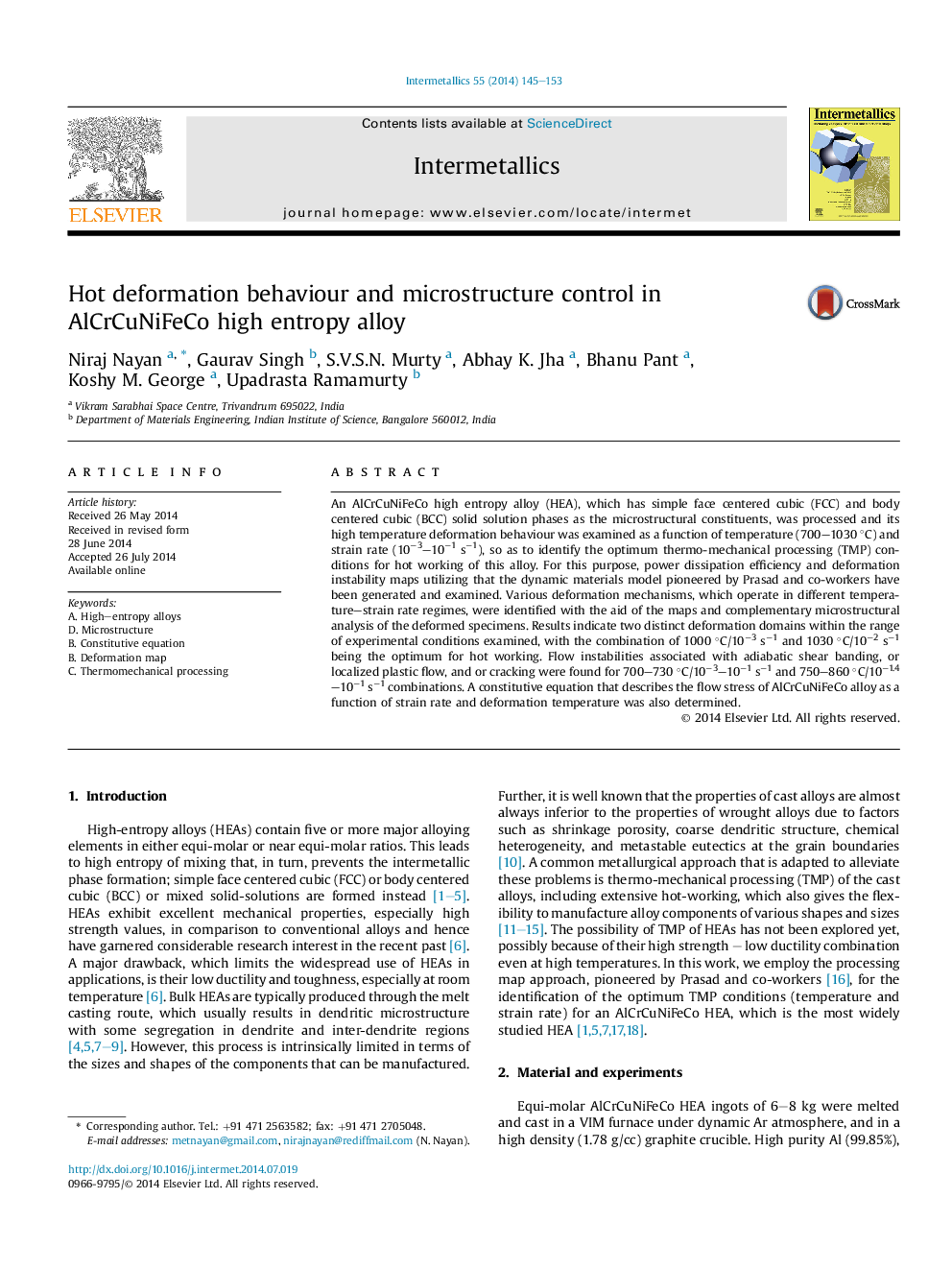| Article ID | Journal | Published Year | Pages | File Type |
|---|---|---|---|---|
| 1600065 | Intermetallics | 2014 | 9 Pages |
Abstract
An AlCrCuNiFeCo high entropy alloy (HEA), which has simple face centered cubic (FCC) and body centered cubic (BCC) solid solution phases as the microstructural constituents, was processed and its high temperature deformation behaviour was examined as a function of temperature (700-1030 °C) and strain rate (10â3-10â1 sâ1), so as to identify the optimum thermo-mechanical processing (TMP) conditions for hot working of this alloy. For this purpose, power dissipation efficiency and deformation instability maps utilizing that the dynamic materials model pioneered by Prasad and co-workers have been generated and examined. Various deformation mechanisms, which operate in different temperature-strain rate regimes, were identiï¬ed with the aid of the maps and complementary microstructural analysis of the deformed specimens. Results indicate two distinct deformation domains within the range of experimental conditions examined, with the combination of 1000 °C/10â3 sâ1 and 1030 °C/10â2 sâ1 being the optimum for hot working. Flow instabilities associated with adiabatic shear banding, or localized plastic flow, and or cracking were found for 700-730 °C/10â3-10â1 sâ1 and 750-860 °C/10â1.4-10â1 sâ1 combinations. A constitutive equation that describes the flow stress of AlCrCuNiFeCo alloy as a function of strain rate and deformation temperature was also determined.
Related Topics
Physical Sciences and Engineering
Materials Science
Metals and Alloys
Authors
Niraj Nayan, Gaurav Singh, S.V.S.N. Murty, Abhay K. Jha, Bhanu Pant, Koshy M. George, Upadrasta Ramamurty,
